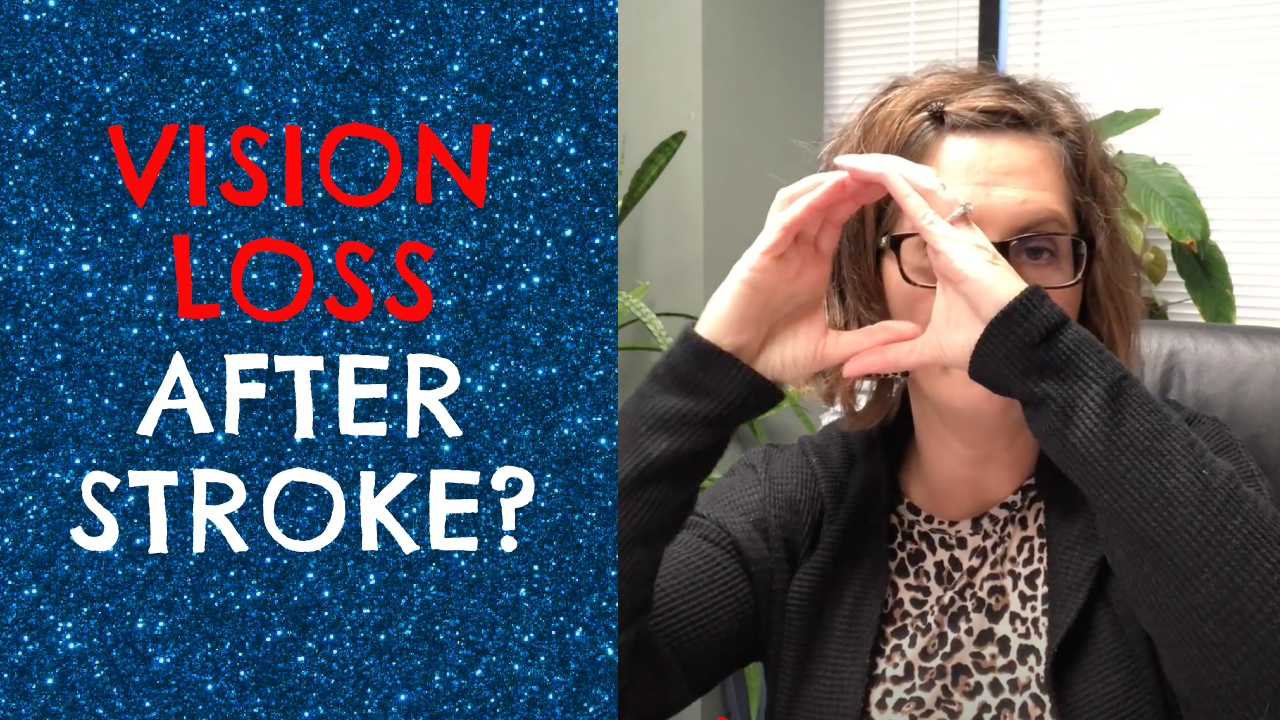If you or a loved one has suffered a stroke, the visual pathway of the brain can be damaged. Not only are there other deficits that can occur in sensory, motor and cognitive skills, but normal visual field can be compromised after a stroke happens. A normal visual field is the full area that can be visually seen around you, and this can be lessened after a stroke occurs. At Vision for Life and Success, we can help determine if the stroke has affected visual field loss and assist in the patient’s recovery process.
There are ways to determine if visual field loss has occurred. The amount of loss is determined by the part of the brain’s visual pathway affected by the stroke. Visual processing occurs in the occipital, termporal and pariental lobes and the extent of the visual field loss is determined based on the location and extent of the brain injury. Symptoms of a visual loss post stroke may include:
- Blurred vision while watching television
- Visual neglect, which means patient is unable to react to stimuli on one side of vision (left or right)
- Frequently walking or bumping into objects
- Trouble scanning or reading a page
If you or a loved one is noticing any of the above symptoms after having a stroke, Vision for Life and Success can offer a complete vision evaluation to determine the extent of the visual field loss and make recommendations on a vision therapy plan.
The most common symptom of visual processing after a stroke is blurriness or a blind spot in the vision. Often, after a stroke, the individual may not even be fully aware that a change in their visual field has even occurred. That’s why it’s important to talk to your loved one after a stroke about their vision and contact us for a vision evaluation. Visual health should never be disregarded or ignored, and any vision changes post-stroke should be evaluated.
Vision for Life and Success has an experienced staff and developmental optometrist to administer a vision field test. With our customized therapy program, we can re-train the eye and brain connection. When the visual pathway has been damaged due to a stroke, Syntonics can be used to stimulate any blind spots that may have occurred or blurriness in a patient’s visual field. This highly effective light therapy works well on stroke patients of all ages. The moving and blinking lights stimulate the neurons in the brain that may have been injured by a stroke. The various colors of filters stimulate the neurons in the brain that may have been injured by a stroke.
At Vision for Life & Success, we can help a patient not only regain some of their normal field loss but all of it, depending on all factors associated with the stroke and its severity. If you are interested in learning more about Vision for Life & Success and our customized vision therapy, please visit our website at visionforlifeworks.comor contact us directly at (618) 288-1489. We also offer scheduling here. Our vision therapy services include developmental vision exams, evaluations, learning-related vision treatments and treatments for binocular vision conditions, injuries, rehabilitation and more.
